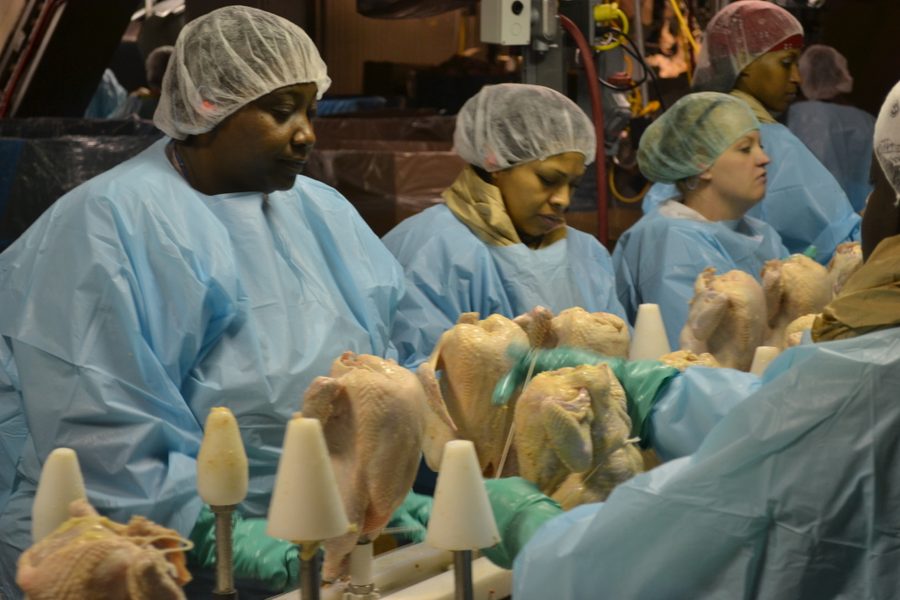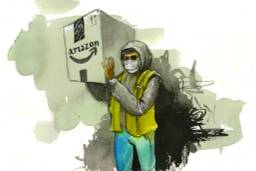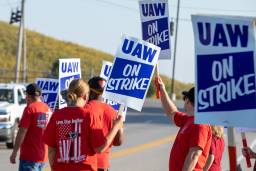
Americans these days are nervous about what they eat, and they should be, what with outbreaks of foodborne illnesses, meat pumped with veterinary drugs and genetically modified organisms creeping into our groceries. And in May, when the iconic brand of Smithfield Foods was bought by a Chinese multinational, there seemed to be still more cause for alarm. China seems even more rife with food hazards: rivers brimming with pig carcasses, poisonous baby formula, lakes of toxic waste.
But in both hemispheres, reports about health and safety scares tend to gloss over an underlying malaise afflicting the food system: the many hazards that are concentrated further up in the production chain, in the slaughterhouses and processing plants where corporations regularly subordinate workers’ health and safety, along with public health concerns, to their insatiable hunger for profits.
A 2011 petition filed with the Inter-American Commission on Human Rights by the Midwest Coalition for Human Rights and Nebraska Appleseed described the unsavory conditions that U.S. meat-processing workers face every day:
Processors require their line employees to work at an extremely fast pace to keep up with these demands. The work is performed in very dangerous conditions: floors are slippery with grease, blood, and fat; temperatures are extremely cold or hot, and the work is arduous and repetitive — employees make upwards of 20,000 cuts a day.
In a 2012 report on labor conditions in the livestock industry by the Midwest Coalition, an Iowa plant worker testified, “Many workers are harmed, there is [not] enough time to do our tasks, the speed is so fast and we have to stretch ourselves to do the pieces. We are always working beyond the capacity of our bodies.”
Health hazards are intensified by a shopfloor culture that exploits and disempowers workers. Union membership has been plummeting since the 1980s. With low wages and massive stress, the sector relies heavily on immigrant workers, who may often be intimidated and silenced by the threat of being unfairly punished or fired for speaking out on health and safety problems.
Under such conditions, should consumers be shocked that food quality is endangered, too? These same factories and slaughterhouses have brought us arsenic-laced chicken and livestock laden with antibiotic-resistant pathogens. A recent USDA Inspector General report on pork plants found that regulators frequently failed to adequately enforce safety standards, while many facilities were cited for issues like mishandling hogs during slaughter, fecal contamination and pest-infested “kill floors.”
Remedying these problems – from toxic pork to musculoskeletal injuries – requires recognizing the connection between the regulatory failures across the industry as a workplace and a food supply.
Tom O’Connor, executive director of the National Council for Occupational Safety and Health, says the safety implications for the food produced in these plants should concern everyone. “It stands to reason that in a workplace where there’s a high level of pressure on workers to work as fast and to not report hazards, the same thing can happen in terms of quality control or food quality.”
The poultry industry illustrates the potential nexus between workplace conditions and the quality of the food it churns out. A recent catastrophic chemical fire at a Chinese poultry plant that killed 120 workers made international headlines. But silent dangers stalk U.S. facilities as well. On top of abuse and harassment from bosses, repetitive-stress injuries are prevalent in poultry plants, often leading to debilitating chronic pain that makes workers’ lives miserable.
And the job may soon get even more painful. The USDA has sought to “modernize” safety monitoring by essentially removing many inspectors from the lines and instead having plant workers perform visual quality checks, while using antimicrobial chemicals to help sanitize birds. At the same time, the proposed scheme would pump production by allowing faster processing speeds. So while workers cut up carcasses, whipping past them at a rate of up to 175 a minute, they are supposed to watch for unhealthy-looking chickens simultaneously. Studies on pilots of this program have revealed alarming rates of error in catching unsanitary birds. But consumers should also be alarmed about the greater danger experienced by workers as production reaches even more insane speeds, supposedly for greater efficiency. The USDA’s proposed reforms essentially do not contemplate their implications for worker safety.
This disconnect between food quality and workers’ health reflects a profound regulatory gap, not only because unhealthy workplaces may lead to unhealthy meat, but because safe workplaces protect public health.
Celeste Monforton, a lecturer at George Washington University School of Public Health, notes that workers could play an important role in safety, but are constrained by brutal working conditions:
When you think about it in terms of food safety, those workers are handling the food, they’re packaging the food. They really can be an important line of defense for our food production system. But when you don’t treat them like humans who… can contribute to making the system work better and have safer food, it doesn’t surprise me that we have outbreaks of foodborne illness. Because an important part of that production are the workers, but they’re not permitted to be part of the solution.
As the canary in the coal mine in dysfunctional workplaces, labor rights are a critical ingredient for a healthy food system. In many cases, the presence of a union could provide a critical supportive workplace climate for calling out safety and health problems:
Jackie Nowell, health and safety director of the United Food and Commercial Workers, says, “It’s still pretty brutal conditions no matter what plant you go in. But people can get to the doctor, people can report the hazards, and they can report their injuries in a much freer atmosphere in a union plant.”
What should consumers really fear about the industrialized food system? The loss of power of ordinary people to control not only what they eat, but the conditions under which they labor – a product of the mechanization and globalization of the food system and consolidating corporate domination. Regardless of whether they are based in China or the United States, multinationals are gobbling up an increasing share of global food markets.
“As competition around the world in this industry grows, that just puts more pressure on American-based companies, whoever owns them,” O’Connor says. “They’re going to have to really watch their bottom lines and tighten up even more, and have work sped up even more… the global race to the bottom.”
American consumers have every right to know whether their food is safe to eat. But justifiable anxieties about contaminated steak or diseased drumsticks are linked to the need to understand the conditions people endure to bring that food to our tables. If we cared more about those workers, we’d be better able to care for all of our health.

I hope you found this article important. Before you leave, I want to ask you to consider supporting our work with a donation. In These Times needs readers like you to help sustain our mission. We don’t depend on—or want—corporate advertising or deep-pocketed billionaires to fund our journalism. We’re supported by you, the reader, so we can focus on covering the issues that matter most to the progressive movement without fear or compromise.
Our work isn’t hidden behind a paywall because of people like you who support our journalism. We want to keep it that way. If you value the work we do and the movements we cover, please consider donating to In These Times.
Michelle Chen is a contributing writer at In These Times and The Nation, a contributing editor at Dissent and a co-producer of the “Belabored” podcast. She studies history at the CUNY Graduate Center. She tweets at @meeshellchen.







